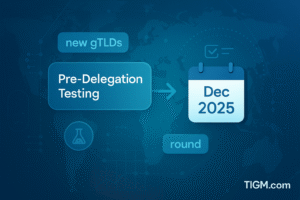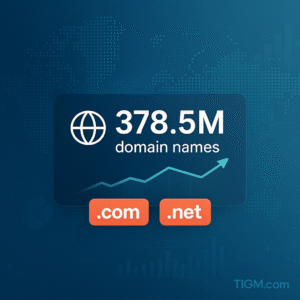CentralNic has successfully completed backend infrastructure migration for the .CO registry, marking another milestone in the ongoing wave of country-code top-level domain modernization that’s swept through the industry over the past several years.
The migration moves .CO onto CentralNic’s consolidated registry platform, joining other ccTLDs and gTLDs the company manages. For registrars and domain owners, the transition was designed to be seamless—the kind of backend overhaul that happens without disrupting registration flows or nameserver updates.
Why Backend Migrations Matter
Registry infrastructure migrations sound technical and boring until something goes wrong. Then they’re catastrophic. Moving millions of domain records, DNS configurations, and WHOIS data between systems without causing outages or data corruption requires meticulous planning and execution.
CentralNic’s completion of the .CO migration without reported issues suggests the company has refined its migration playbook after handling numerous registry transitions. That matters because backend stability directly impacts domain owner confidence and registrar willingness to promote extensions.
The .CO Story
Colombia’s country-code domain has enjoyed remarkable success as a global alternative to .com, particularly among startups and tech companies. The two-letter extension’s brevity and the “company” association made it valuable far beyond Colombian borders.
.CO’s rise happened because the Colombian government and registry operator recognized the extension’s international potential and marketed it aggressively. Backend infrastructure that can scale globally became essential as registration volume grew beyond typical ccTLD levels.
The Broader ccTLD Modernization Trend
CentralNic’s .CO migration fits a larger pattern. Country-code registries worldwide are modernizing infrastructure, often by partnering with established backend providers rather than maintaining proprietary systems.
The economics drive the shift. Building and maintaining modern registry infrastructure requires significant capital investment and technical expertise. Smaller ccTLD operators can’t justify those costs when backend-as-a-service providers offer proven platforms at predictable pricing.
Registries also benefit from standardized registrar interfaces. When multiple TLDs operate on the same backend platform, registrars integrate once and gain access to the entire portfolio—lowering barriers to adding new extensions.
What Registrars and Domain Owners Should Know
For registrars, the migration means .CO now operates on infrastructure they likely already integrate with for other CentralNic-managed TLDs. That reduces technical overhead and support complexity.
For domain owners, backend migrations should be invisible. Your .CO domains resolve the same, renewals process normally, and WHOIS data remains intact. The only potential friction points occur during the actual cutover window—typically measured in hours—when some registry functions may be temporarily unavailable.
The Stability Signal
Successful infrastructure migrations signal registry maturity and long-term viability. ccTLDs that modernize their backend systems demonstrate commitment to keeping pace with industry standards and registrar expectations.
For .CO specifically, the CentralNic migration reinforces the extension’s position as serious infrastructure rather than niche experiment. Two-letter domains on stable, modern platforms command premium positioning in registrar portfolios and investor attention.
Looking Forward
Expect more ccTLD migrations as smaller registries recognize the operational advantages of consolidated platforms. The trend benefits the domain ecosystem by reducing technical fragmentation and improving reliability across extensions.
For domain investors and registrars, backend stability is a proxy for registry health—and health matters when you’re betting on long-term domain value.








